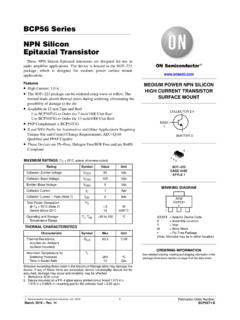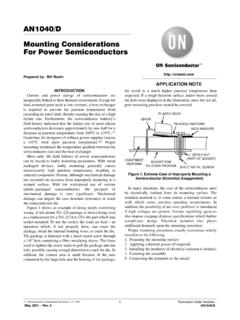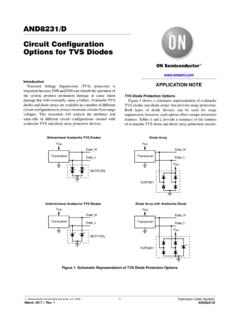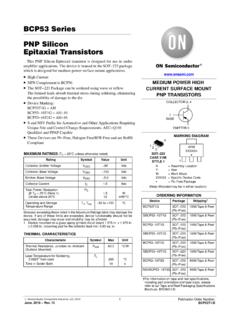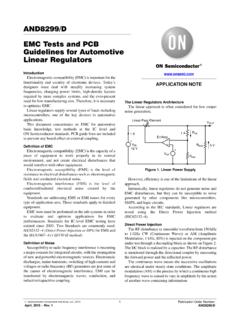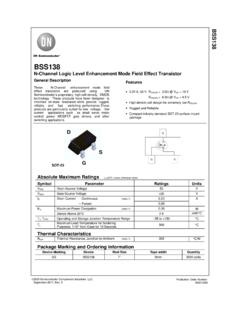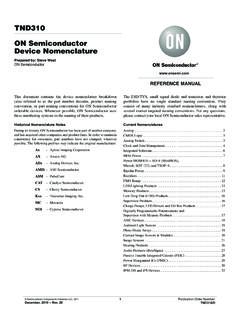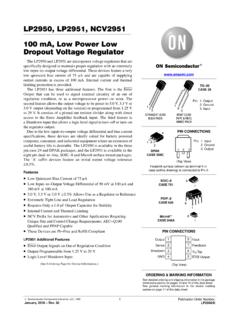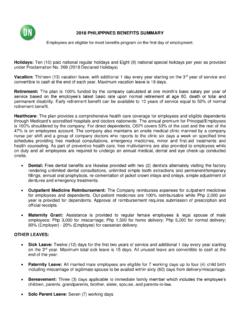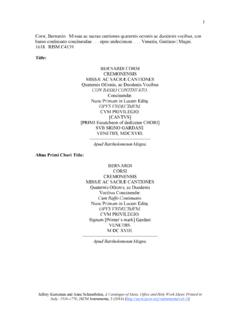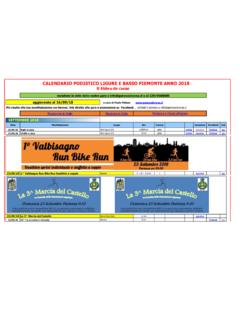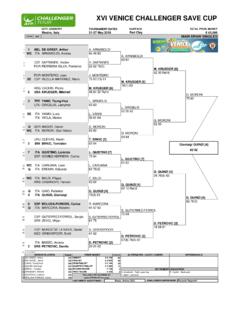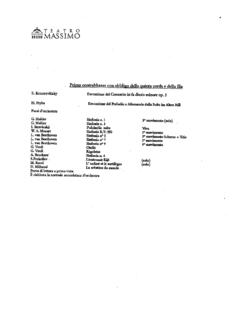Transcription of The “PWM Switch” concept included in mode transitioning ...
1 The PWM Switch concept included in mode transitioning spice models . introduction Vatch Vorp rian introduced his PWM Switch model concept in the 90 s where he showed the invariant relationship between the a-c-p terminals when his model was dropped into numerous switching converters. Based on his work, several SPICE models have been made, however the current-mode control DCM case was never covered. Since Vorp rian did adopt two different configurations for the DCM and the CCM voltage-mode cases, the SPICE implementation, such as the PSpice one, uses mode transition switches and seriously complicates the model . Also, it does not exist any DCM-CCM for peak current-mode control which is one of the most popular implementations. (1) Innovative Contributions This work was motivated by the absence of simple and efficient SPICE models for peak current mode control able to a) predict the Fsw/2 subharmonic oscillations b) capable of automatically transitioning from CCM to DCM.
2 Up to now, models exist but they do not predict subharmonic oscillations or if they do, such as Ray Ridley models, they cannot find their operating point alone and disallow transient response analysis. Ridley models also do not transition from CCM to DCM and require separate subcircuits for each operating mode. Also, the complexity of some models make their usage a painful exercise when trying to understand how they were derived. Finally, simplicity is a key point to improve convergence success in simulation. To that respect, these new models are particularly robust. (2) Practical Results Vatch Vorp rian s PWM switch derived in the Continuous Conduction Mode (CCM) uses the common-passive configuration which leads to a very simple large-signal implementation: a DC transformer featuring a turn-ratio of D (or d1), D being the control duty-cycle.
3 Figure 1 shows this implementation whereas figure 2 shows how to wire the model in a BUCK configuration: apc1D = 12L175udacPWM Figure 1 common passive Figure 2 a BUCK in a voltage-mode sketch configuration In his second paper dealing with the Discontinuous Conduction Mode (DCM), V. Vorp rian started his analysis using the common-common configuration option which lead to a different model arrangement. Unfortunately, if one wants to create a model that covers both CCM and DCM, either one needs to be re-arranged to fit a given stable format. We have selected the DCM model to make it fit the common-passive configuration. The derivation process actually consists in linking the various model currents, like the terminal a current and the terminal c current for instance but also by identifying the interval d2, which corresponds to the time needed by the inductor current to ramp down to zero in DCM.
4 The paper step-by-step details how to get there and the final voltage-mode model looks like what figure 3 depicts: apc1d1 / (d1+d2) Figure 3 a simple transformer affected by a ()112ddd+ 2 22111Ic L Vac d TsL Fs IcddVac d TsdVac == (eq. 1), with d1 the on time duty-cycle. As one can see by looking at figure 3 expression, the model reduces to 1:d1 when d2 = 1 d1: we are in CCM! As such, nothing else is needed to make an auto-toggling model . We generate the d2 value according to equation 1, clamp it to (1-d1) and we are all set. The below model is actually the SPICE implementation. Difficult to do simpler than that for a complete DCM-CCM voltage-mode model ! (3) Novel Contributions This paper shows a working SPICE model for current-mode power supplies, able to predict subharmonic oscillations, able to work in large-signal mode, able to find its DC operating point and finally, capable to toggle into discontinuous conduction mode.
5 So far, no similar models exist. Ray Ridley models can predict subharmonic oscillations, but they only work in AC, also requiring a model for DCM and another one for CCM. (4) Why is it different or extends existing work The original paper published by Vatch Vorp rian solely covered the current-mode CCM case. The DCM case was never documented. Also, the technique used to derive the voltage-mode switch, did not allow a simple SPICE model implementation. This paper not only covers the missing section but offers an implementation of a simple model . (5) Experience Various test results are presented, including cycle-by-cycle transient response and Bode AC sweeps for numerous configurations. Below is a SEPIC converter whose results are compared to another available model . VoutR115016C5100uFR1070m312 Vin501L1800u2R110kR3x10k68X2 AMPSIMPV225 Verr5 LoL1kH10 CoL1kFVstimAC = #a4ph_vout#a101001k10k100kfrequency in , ph_vout#a in , vdbout#a in db(volts)Plot11234 Figure 4 AC template for the SEPIC converter, PWM Switch versus CoPEC Other topics covered This paper also describes how to build peripheral subcircuits needed to simulate Power Factor Correction converters and voltage-dependent capacitors.
6 References 1. R. B. RIDLEY, A new small-signal model for current-mode control , PhD. dissertation, Virginia Polytechnic Institute and State University, 1990 2. Vatch VORPERIAN, Simplified Analysis of PWM Converters Using The model of The PWM Switch, Parts I (CCM) and II (DCM) , Transactions on Aerospace and Electronics Systems, Vol. 26, N 3, May 1990. 3. B. Erickson, D. Maksimovic, Advances in Averaged Switch Modeling and Simulation , CoPEC seminars
